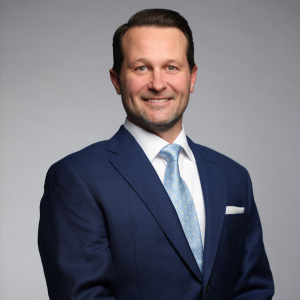Theory of preferred view
Old age is a stage of life in which people are still developing. The Erickson School teaches that organizations that embrace and enact this philosophy will provide care that honors the strengths of each individual, even in the face of the many losses that can come with age. This reflects what many people have predicted our Baby Boom customers will demand, and they have a long history of getting what they want. The Baby Boomers will experience aging like no cohort before them, and this will challenge our traditional models of elder services.
Combining our belief that elders should be treated as individuals first with the Boomers’ expectation that “the customer is always right” means that many organizations will need to examine their cultures and take a hard look at whether a change would constitute a competitive advantage. One way to make sure that focusing on elders’ retained strengths and honoring their contributions and wisdom remains a priority is to practice person-centered management, and this is likely to require a change to organizational culture in many long-term settings.
Organizational culture has been defined by management professor Edgar H. Schein of MIT as “a pattern of shared basic assumptions that was learned by a group as it solved its problems of external adaptation and internal integration, that has worked well enough to be considered valid, and therefore, to be taught to new members as the correct way to perceive, think, and feel in relation to those problems.”
1 In other words, “it’s the way we do things around here.” Being aware of three facets of culture can help in understanding where to make changes:
Artifacts or tangible factors such as the building, dress code, etc.
Norms, which are managerial low-hanging fruit and easily identifiable things like procedures and policies (and the manuals they fill)
Values-organizational beliefs and self-image
The organization’s values, which most people would say are the most important facet of organizational culture to execute its mission of good care, is most often the piece that is last to be addressed. We strive to create organizations in which person-centered, strengths-based cultures foster mutually empowering “win-win” relationships between residents and employees. Good geriatric care is holistic, and management of employees should be holistic as well to maintain an organization’s goal and avoid culture clash.
In creating mental health and wellness for elders we want to optimize physical, emotional, cognitive, vocational, psychosocial, and spiritual well-being through active aging. We want to use personal strengths and community resources harmoniously. The goals for healthy employees are much the same: Optimize the person’s well-being and sense of engagement, and find a match between the employee’s strengths and personal goals with elements of the job and contributions to the high functioning of the organization. Give the employee the sense that he or she can function at the highest level without having to ask constantly for guidance or permission, and encourage each person to feel good about making a contribution that is recognized by the organization.
PREFERRED VIEW
To optimize one’s contribution and sense of well-being on the job, bringing the “preferred view” theory of Joe Eron and Tom Lund2 into management can help. Preferred view posits that people have strong preferences on how they would like to behave, how they would like to see themselves, and how they would like to be seen by others. This constellation of ideas is the person’s preferred view-the attributions people make about their behavior-for example, “I did that because I am caring and skillful” or “I did that because I am in charge.” These statements reflect a person’s preferences, hopes, and intentions for their behavior. When this viewpoint is shared by peers and managers, the employee functions well and feels comfortable and valued.
A “gap” exists where there is a discrepancy between how employees would like to see themselves and be seen by others, how they think others may see them, and how they view their own behavior. The larger the gap, the more unhappy and unsettled the person is going to be. The gap widens or narrows as people see their own behavior and/or imagine that others see them in ways that clash or match with their preferred view. For example, if an employee perceives that a supervisor is interested in what he or she has to say, the gap will narrow because the employee’s preferred view that his or her contribution is valuable is affirmed.
“THE PROBLEM CHORUS”
As people go through life, they accumulate experiences that result in feeling that a large cast of significant others view them in negative, unsettling ways. This group is referred to as “the problem chorus.” People often perceive a seemingly unified voice saying that they are “bad parents,” “incompetent kids,” “lazy,” etc., which contributes to negative emotions and problematic behavior. It also increases the likelihood that people will anticipate that others see them in similar, negative ways and trigger negative messages in their own heads about their intentions. Managers do not want to find themselves in the problem chorus of those they are managing. Be aware of negative interactions or perceptions that might undermine the working relationship and unintentionally create more culturally nonconforming behavior in employees.
PREFERRED VIEW MANAGEMENT
A simple way to manage using preferred view is to communicate about people’s perceptions of what they have to offer, what brought them to the job, and how their contributions are valuable. When an employee has come under criticism by a resident or family member, make sure to hear his or her side of the story and look for areas where the employee’s strengths or contributions may have been undermined by poor communication or the norms and artifacts that make up other parts of the organizational culture. The most insightful leaders will look to see if their practices are out of line with the values espoused in their vision and mission statements and, therefore, widen the gap in many employees and even among leadership. Being aware of the employee’s preferred view and striving to close the gap that culture or management might be creating will go a long way toward changing the culture to a positive one.
CONCLUSION
A significant part of changing organizational culture to meet the demands of both residents and employees derives from rebutting ageist myths and social stereotypes by increasing expectations that elders, and those who work with them, will continue to grow. Being aware of the organization’s and each person’s preferred view, and working to close gaps and silence the problem choruses, will make this change far easier and work more enjoyable. LTL
Judah L. Ronch, PhD, is the Dean of and a professor at the Erickson School, University of Maryland Baltimore County, which offers undergraduate and Master’s degrees in Management of Aging Services as well as online and live Executive Education programs and customized industry training. He can be reached at
REFERENCES
- Schein EH. Organizational Culture and Leadership. San Francisco:Jossey-Bass, 2004.
- Eron JB, Lund TW. The Narrative Solutions Approach: Bringing Out the Best in People as They Age. In: Ronch JL, Goldfield JA. Mental Wellness in Aging: Strengths-Based Approaches. Baltlimore:Health Professions Press, 2003.
Long-Term Living 2011 February;60(2):16-18
I Advance Senior Care is the industry-leading source for practical, in-depth, business-building, and resident care information for owners, executives, administrators, and directors of nursing at assisted living communities, skilled nursing facilities, post-acute facilities, and continuing care retirement communities. The I Advance Senior Care editorial team and industry experts provide market analysis, strategic direction, policy commentary, clinical best-practices, business management, and technology breakthroughs.
I Advance Senior Care is part of the Institute for the Advancement of Senior Care and published by Plain-English Health Care.
Related Articles
Topics: Articles , Facility management , Leadership , Staffing











